Do people in Osaka really eat crunchy fried noodles with curry? We ask a local, then try it out
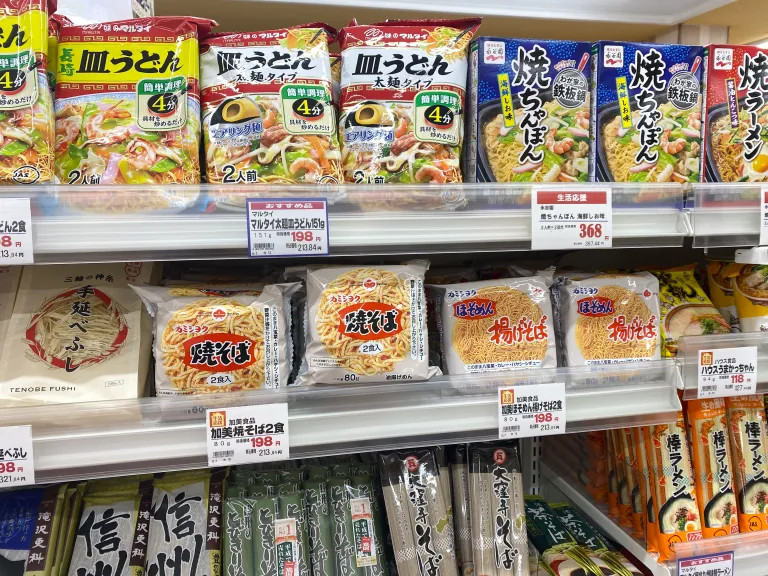
This is something we’ve never heard of–but not something we’re opposed to trying!
Our Japanese-language reporter Ikuna Kamezawa was visiting Osaka recently, and while checking out a local supermarket she came across a section full of “agesoba,” or deep-fried, crispy noodles. Ikuna has mostly known such crispy noodles to be udon-sized and topped with saucy vegetables in a Nagasaki dish called sara udon. To see them called “soba” was interesting…and they seemed to come in different sizes, too!
In any case, you don’t really see much agesoba being sold in Tokyo, and the shelves at this Osaka supermarket were packed with mostly local brands. Clearly, it’s a popular food for Osakans, so she decided to buy some to try out.
The ones she selected were called “Kamishoku”, an Osaka brand that retailed for 213 yen (US$1.43) each.

There was a thin type labeled “Agesoba” and a thick type called “Yakisoba.” Ikuna had no idea why, when “yakisoba” is its own, completely separate thing. But while that was confusing, what was entirely more pressing was the serving suggestions listed on the packaging.
▼ “Eat as is topped with baboacai (stir-fried Chinese vegetables), curry, stew, hayashi stew, or vegetable soup.”
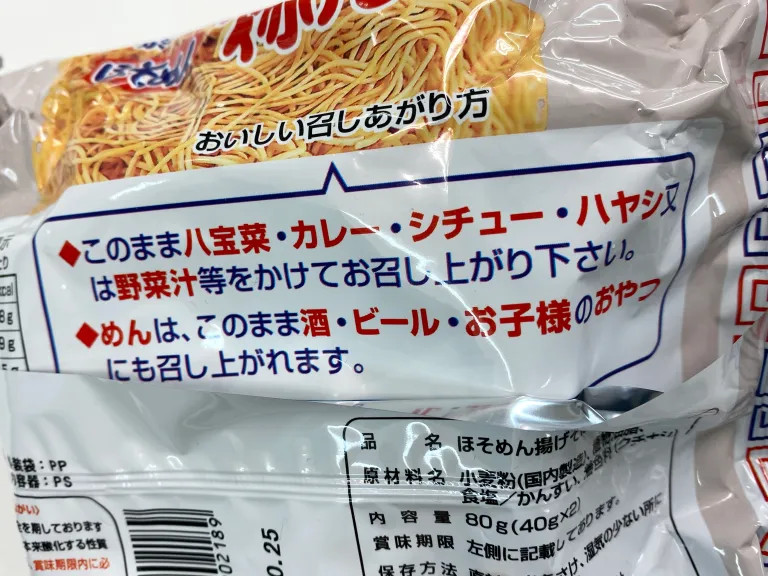
“What?!” cried Ikuna. The stir-fried vegetables were fine, since that would basically be saru udon. The confusing part was everything else. Curry? Stew? Ikuna had never heard of such a thing!
In such situations where the cultural differences between Kansai and Kanto offer too many riddles, there is always one person in the office we can always rely on: Osaka native Seiji Nakazawa. He’s spent much of his life living in both places, so he’s an expert when it comes to answering our Tokyo-ite reporters’ burning questions. So, is it normal for Osakans to eat deep-fried noodles with stew and curry? And what does it taste like?
▼ Please tell us, guy from Osaka!
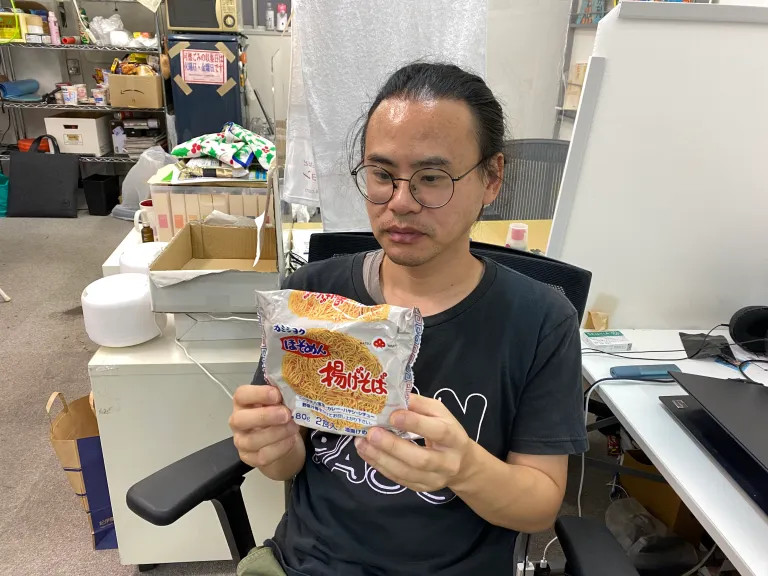
Seiji: “Um…I’ve never heard of that before…”
Not even our most reliable Osaka-born source knew. The circumstances were getting dicey, but Ikuna, a reputable journalist herself, knew what to do. There was no choice but to try it!
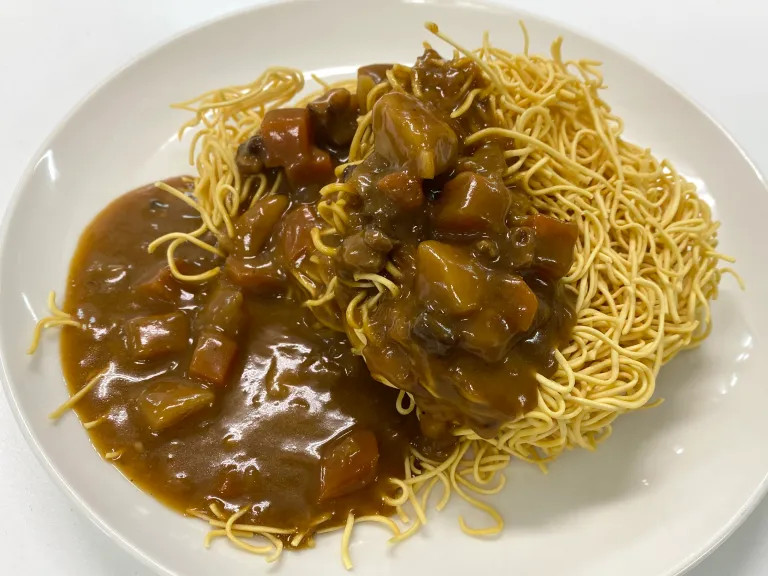
So she poured some curry over the agesoba (the skinny kind) and gave it a taste. It was really delicious!

Everyone in the office who was there to try it gave it high praise, saying it was even better than saru udon. It was different from eating regular curry rice too. Unlike rice, which plays a supporting role to curry, the crunch and flavor of the agesoba was a perfect match. It did not let the curry overpower it. If you were to think of them as a band, it would be like the curry was the vocalist and the agesoba was the guitarist. Without either of them, the band (or the curry agesoba) would not exist; they were equally vital to the harmony of the dish.
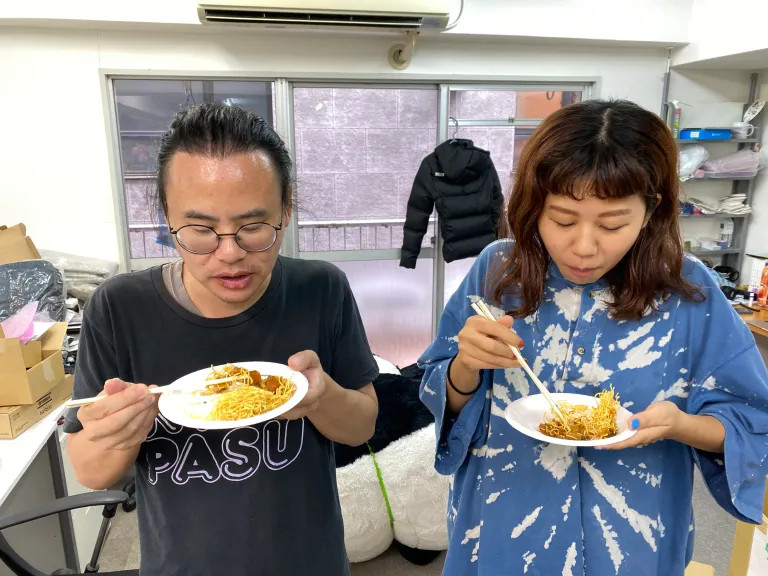
If Ikuna ran a diner or a bar, she would put this on the secret menu. No doubt it would be insanely popular!
Of course, just like saru udon, the longer the crispy noodles sat in the curry, the more moisture they absorbed and the soggier they got. But that was honestly just as delicious. It was like the world’s richest curry ramen. Ikuna used a ready-made curry-in-a-pouch this time, so she couldn’t wait to try it with a high-quality curry or an Indian curry. That would be out of this world!
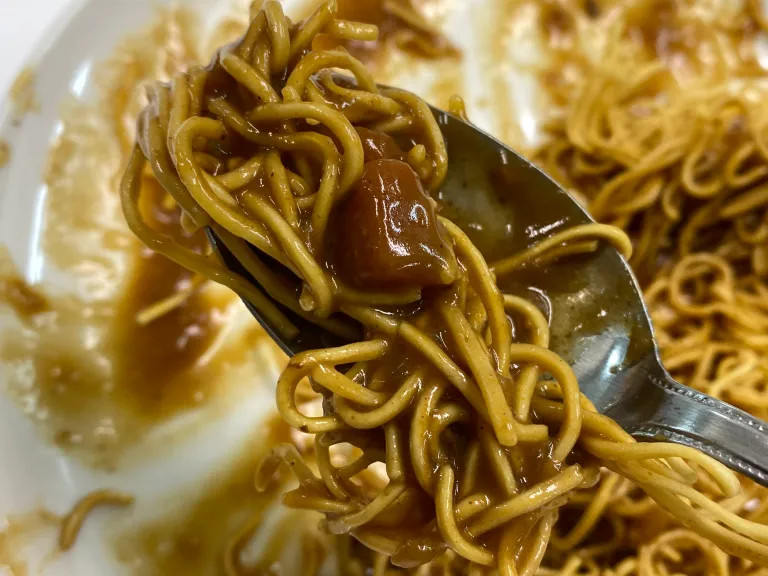
Ikuna had another question, though. Along with stew and curry, the packaging also mentioned that you could serve the crispy noodles with “vegetable soup.” She had to wonder exactly what kind of “vegetable soup” they meant, so she once again asked Osaka-native Seiji, who once again replied, “I’ve never heard of that either.” The plot thickened. “Maybe I can use miso soup?” she wondered.
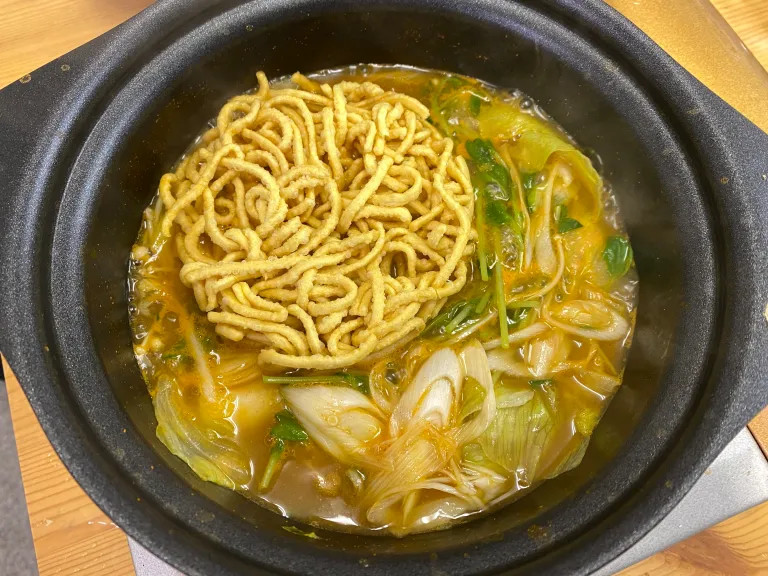
While rummaging in the office pantry, she found a pouch of “Kimchi hot pot”, which was essentially a vegetable soup with kimchee in it, so she decided to give that a try.
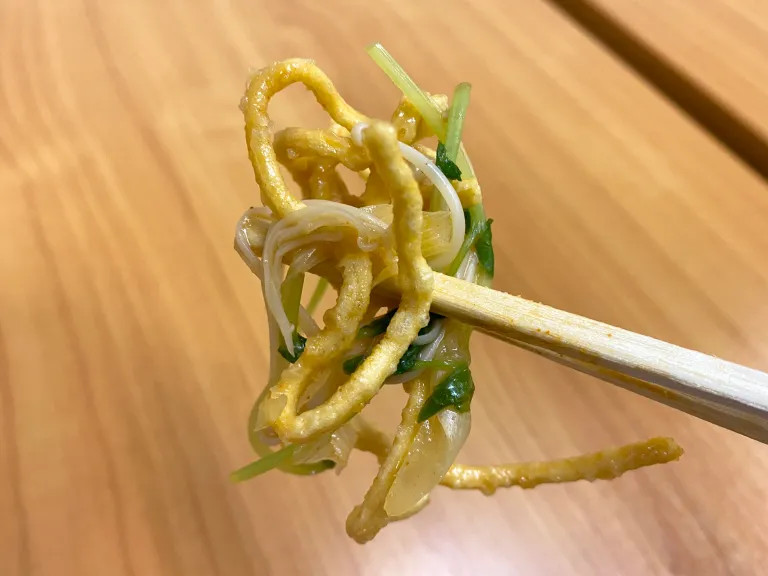
This hinted that she was on the right track, which further deepened the mystery. What more could one use agesoba for? It seemed like it had limitless potential, like rice, which can be used in so many infinite, unexpected ways–as rice buns, as a drink, even as a substitute for ramen. In the end, Ikuna still has no idea how popular curry agesoba might be in Osaka, but that doesn’t matter so much as this new culinary discovery that will now make its way onto her regular dinner rotation.
Images © SoraNews24
● Want to hear about SoraNews24’s latest articles as soon as they’re published? Follow us on Facebook and Twitter!
Credit:

0 comments: